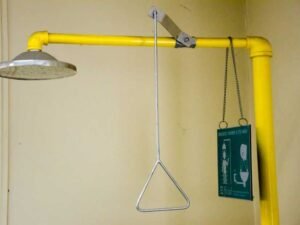Procurement is at a crossroads. As organizations grapple with global supply chain disruptions, sustainability mandates, and the demand for cost efficiency, traditional procurement processes are proving inadequate. Root problems—fragmented workflows, misaligned strategies, and untracked outcomes—persist, undermining procurement’s potential as a strategic driver.
Procurement problems and solutions are being redefined by akirolabs, a cloud-native, AI-enabled SaaS platform that tackles these challenges head-on with intelligent technology and cross-functional alignment. This blog explores how akirolabs is rethinking procurement, addressing its core issues through AI-driven tools and strategic integration, and delivering transformative value for enterprises across industries.
Common Procurement Problems and Their Impact on Business
While procurement is an essential function, the complexities involved often lead to inefficiencies and missed opportunities. Here are some of the most common procurement problems that many organizations face today:
1. Fragmented Data and Lack of Integration
In many organizations, procurement teams are forced to work with data that is scattered across various systems, from Excel spreadsheets to ERP tools. This fragmented data makes it difficult to gain a clear, real-time view of spend, supplier performance, and category management.
The absence of integration between procurement systems and other business systems can result in errors, missed savings opportunities, and poor decision-making. Moreover, procurement professionals often waste valuable time compiling and reconciling data manually, which could be better spent on strategic activities like supplier negotiations or risk assessment.
2. Supplier Relationship Management (SRM) Challenges
Strong supplier relationships are crucial to procurement success, but many organizations struggle with managing these relationships effectively. Procurement teams often face difficulties in tracking supplier performance, assessing risk, and maintaining clear communication. This can lead to suboptimal sourcing decisions, delayed deliveries, and missed cost-saving opportunities.
Additionally, without a clear framework for evaluating and managing suppliers, procurement teams risk falling into reactive rather than proactive management. Inconsistent supplier performance and lack of communication can also cause disruptions across the supply chain.
3. Risk Management Deficiencies
In today’s global supply chain, procurement teams are responsible for managing various risks, including geopolitical issues, supply chain disruptions, financial instability, and compliance risks. However, traditional procurement processes often lack the necessary tools to proactively assess and mitigate these risks. As a result, organizations are left exposed to potential threats that could impact operations, brand reputation, or compliance.
For example, many procurement teams only identify risks after they have already impacted the business, making it harder to respond quickly and effectively. This lack of real-time risk monitoring and predictive analytics often results in reactive decision-making.
4. Inefficiency in Cost Optimization
Procurement teams are under constant pressure to reduce costs while maintaining supplier quality and meeting business objectives. However, many procurement professionals still rely on outdated methods for cost optimization, such as relying on historical data without considering current market conditions or supplier performance. Without modern tools and systems, procurement teams often struggle to identify opportunities for cost reduction or to achieve the expected savings from their sourcing strategies.
This inefficiency is compounded by the complexity of managing multiple suppliers and categories, often leading to missed opportunities for consolidation, negotiation, or alternative sourcing options.
5. Limited Strategic Alignment with Organizational Goals
Procurement is often viewed as a transactional function, primarily concerned with sourcing and purchasing goods and services. However, strategic procurement is about more than just buying; it’s about aligning procurement activities with the broader organizational goals, such as sustainability, innovation, and risk management.
Many procurement teams struggle to align their sourcing decisions with these long-term business objectives, as they are focused on tactical, day-to-day tasks. This lack of strategic alignment limits the ability of procurement to contribute to the overall growth and success of the organization. As a result, procurement teams may miss opportunities to drive innovation, optimize the supply chain, or improve overall business performance.
How AI and Strategic Alignment Can Address Procurement Problems
Artificial intelligence (AI) has the potential to solve many of the procurement problems outlined above. By leveraging AI-driven tools and strategies, procurement teams can streamline operations, improve decision-making, and better align with business objectives. Let’s take a closer look at how AI can help address these root problems and provide lasting solutions.
1. AI-Driven Data Integration and Analysis
AI-powered procurement software can integrate data from various systems, providing a centralized, real-time view of procurement activities. With AI’s ability to analyze large datasets, procurement teams can gain insights into spend patterns, supplier performance, and market conditions, helping them make informed decisions faster and with greater accuracy.
For example, AI can automatically consolidate spend data from ERP systems, supplier performance data from SRM platforms, and external market data, offering procurement professionals a holistic view of their category strategies. AI can also identify anomalies in data or patterns that indicate opportunities for cost savings, supplier consolidation, or process improvements.
By automating data integration and analysis, AI helps procurement teams move away from manual, error-prone processes and towards a more data-driven and strategic approach to procurement.
2. Strengthening Supplier Relationship Management
AI can play a crucial role in improving supplier relationship management (SRM) by providing procurement teams with real-time insights into supplier performance. AI tools can analyze data on factors such as delivery performance, quality, pricing, and compliance, helping procurement teams identify top-performing suppliers and those that may pose a risk.
For example, AI-powered software can track supplier performance metrics over time, flagging any deviations from expected performance. If a supplier is consistently late with deliveries or not meeting quality standards, procurement teams can take proactive steps, such as renegotiating contracts, seeking alternative suppliers, or offering supplier development programs.
AI can also streamline communication by providing a centralized platform where suppliers and procurement teams can collaborate more effectively. Automated tools can track contract milestones, renewal dates, and payment terms, ensuring that procurement teams never miss important deadlines or obligations.
3. Proactive Risk Management with Predictive Analytics
AI’s predictive capabilities are particularly valuable for risk management in procurement. Traditional procurement systems may only highlight risks after they occur, leaving organizations scrambling to mitigate the impact. AI-driven procurement software, on the other hand, can analyze historical data, external news, and market trends to predict potential risks before they materialize.
For example, AI can scan news articles, regulatory updates, and market reports to identify emerging risks in areas like geopolitical instability, supply chain disruptions, and compliance issues. By identifying these risks early, procurement teams can take proactive measures, such as diversifying suppliers, adjusting sourcing strategies, or implementing contingency plans.
AI can also help assess the risk of individual suppliers by analyzing factors like financial stability, historical performance, and market conditions. This allows procurement teams to make more informed decisions about which suppliers to engage with and how to mitigate potential risks.
4. Data-Driven Cost Optimization
AI is an invaluable tool for cost optimization in procurement. By analyzing vast amounts of data, AI can identify cost-saving opportunities that would be difficult to spot manually. AI-driven software can automatically identify patterns in spending, supplier pricing, and market trends, helping procurement teams make smarter decisions about sourcing and negotiation.
For example, AI can identify opportunities for supplier consolidation, where multiple suppliers are providing similar products or services, resulting in fragmented spending. By consolidating orders with fewer suppliers, procurement teams can negotiate better terms and achieve volume discounts.
Additionally, AI can help procurement teams evaluate the cost-effectiveness of different sourcing models (e.g., local vs. global sourcing, single-source vs. dual-source suppliers) and recommend the best approach based on factors like cost, risk, and supplier performance.
5. Aligning Procurement with Organizational Goals
AI category management software also enables procurement teams to better align their activities with organizational goals, such as sustainability, innovation, and risk management. By embedding ESG (Environmental, Social, and Governance) considerations into procurement strategies, AI helps ensure that sourcing decisions align with broader business objectives.
For example, AI can assess the sustainability practices of suppliers by analyzing factors like carbon emissions, waste management, and renewable energy usage. Procurement teams can use this data to make more environmentally responsible sourcing decisions that contribute to the organization’s sustainability goals.
AI can also help procurement teams assess the potential for innovation in their supply chains by analyzing supplier capabilities, product development processes, and market trends. By identifying innovative suppliers, procurement teams can help drive business growth and enhance competitive advantage.
Conclusion
akirolabs is rethinking procurement by addressing its root problems with AI and strategic alignment, transforming category management into a data-driven, collaborative, and impactful function. By tackling fragmentation, misalignment, and execution gaps, its platform empowers procurement teams to deliver cost savings, sustainability, and enterprise value.










